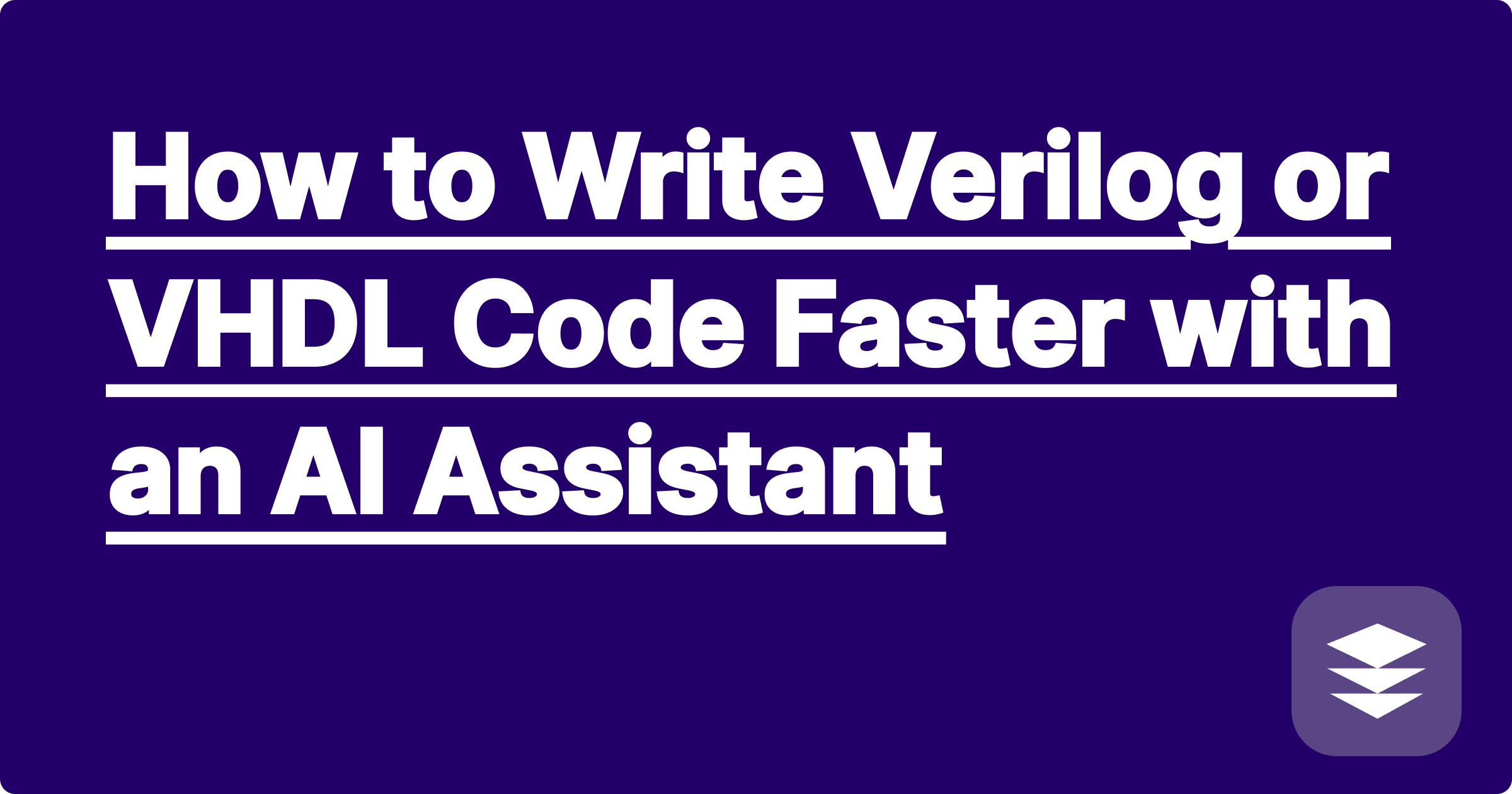
If you're coming to your first digital logic design course from a software background in Python or C++, you're in for a shock. Hardware Description Languages (HDLs) like Verilog and VHDL don't behave like the programming languages you're used to. They describe parallel hardware, not sequential instructions. The syntax is verbose, the "non-blocking" (<=) vs. "blocking" (=) assignment is a constant source of bugs, and writing a thorough testbench can often take longer than designing the module itself.
This conceptual leap and syntactic complexity are where students lose hours, debugging issues that aren't bugs in the traditional sense, but rather a misunderstanding of how hardware is described.
What if you could focus on the logic of your design—the gates and flip-flops—and have an assistant handle the tedious and error-prone task of writing the code and its verification environment? A verilog code generator ai is precisely that assistant, and a tool like GPAI Solver can provide critical vhdl homework help when you need it most.
Why are Verilog and VHDL so different? Unlike software that runs line-by-line, HDLs describe a physical circuit where many things happen at the same time. This parallelism is the biggest mental hurdle.
The most powerful application of AI in this context is as a logic-to-code translator. You can focus on designing your circuit at a high level and let the AI handle the implementation.
module full_adder(
input A,
input B,
input Cin,
output S,
output Cout
);
// Intermediate wires for gate connections
wire xor_1_out, and_1_out, and_2_out;
// First XOR gate for the Sum bit
xor (xor_1_out, A, B);
xor (S, xor_1_out, Cin);
// AND gates for the Carry Out logic
and (and_1_out, xor_1_out, Cin);
and (and_2_out, A, B);
// OR gate to combine for the final Carry Out
or (Cout, and_1_out, and_2_out);
endmodule
This is where an AI assistant saves you the most time. After generating your module, writing the testbench is often an afterthought, but it's critical for verification.
Your Prompt: "Now, write a simple Verilog testbench for this 'full_adder' module. It should test all 8 possible input combinations (from 000 to 111) with a 10ns delay between each test case and display the inputs and outputs."
The AI can generate the entire testbench file, including the clock generation (if needed), module instantiation, input stimulus generation, and output display tasks. This automates a process that could easily take an hour of manual coding.
HDLs have confusing syntax. You can use GPAI as an interactive tutor to understand it.
This allows you to learn the "rules" of the language much faster than by trial and error with a compiler.
Use GPAI Cheatsheet to create the ultimate reference for your course. Every time GPAI generates a core module for you—like a multiplexer, a decoder, or a flip-flop—save that "Knowledge Block" to your cheatsheet. By the end of the semester, you'll have a personal library of clean, verified, and reusable HDL components that will be invaluable for your final project and future courses.
[Stop fighting with HDL syntax and testbenches. Try GPAI Solver today. Describe your logic and get clean Verilog or VHDL code instantly. Sign up now for 100 free credits and accelerate your digital design projects.]
Circuit Analysis Made Simple: An AI Assistant for Nodal and Mesh Analysis
Understanding Electromagnetics: How AI Can Visualize Fields and Waves
Digital Logic Design: From Truth Tables to Karnaugh Maps with AI
Signals and Systems: How AI Can Help You with Fourier and Laplace Transforms
Your Guide to Semiconductor Physics: How AI Simplifies Band Diagrams
How to Write Verilog or VHDL Code Faster with an AI Assistant
Mastering Microelectronics: An AI Tool for Amplifier and Filter Design
The ECE Student's Ultimate Cheatsheet: Combining Circuits, Signals, and Code
Can AI Help Me with My PSpice / LTspice Simulation?
How to Prepare for the FE Electrical and Computer Exam with AI